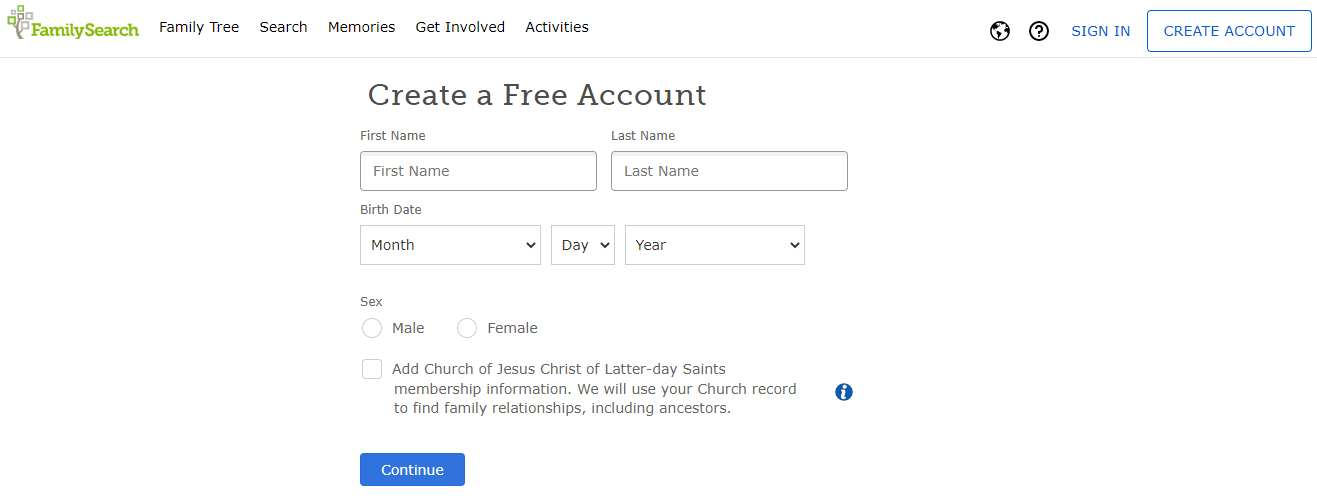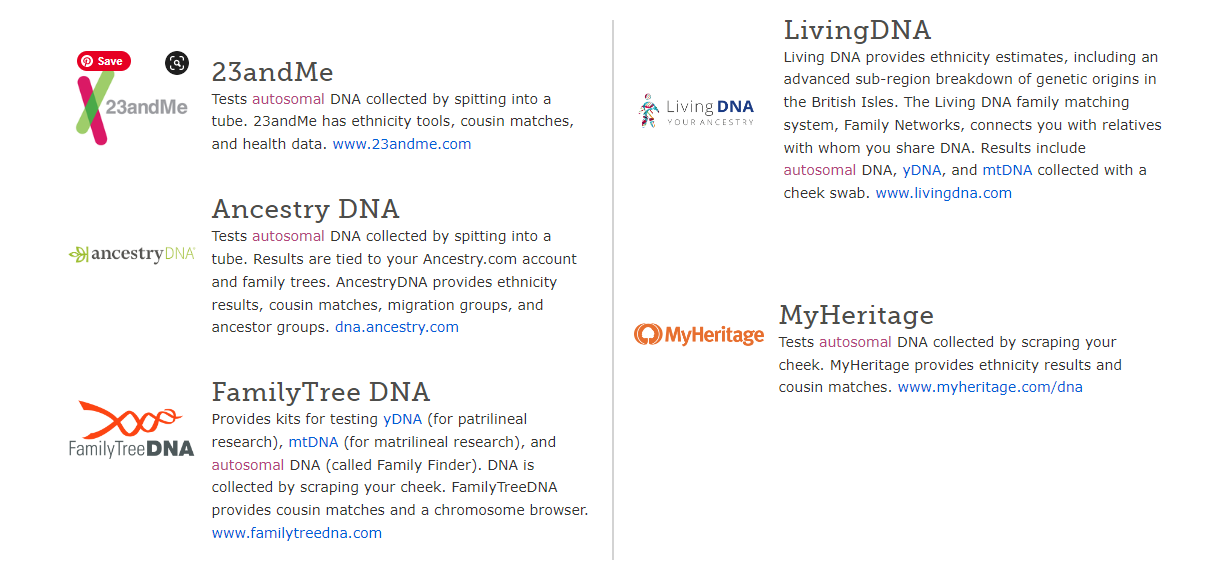FamilySearch Family Tree Review 2024
History is a fascinating subject; what could be more interesting than finding out about your own history? Family trees and DNA testing will help to give you a better idea of who you are and where you come from.
Family trees are a great way to trace your family back and discover who is in your past. You never know, and there could even be some famous names that crop up.
As well as finding out more about your older family history, it is a great way to learn more about your current family, and many people who complete a family tree go on to discover and meet family members they didn't know existed.
DNA ancestry tests will help determine your genetic ethnicity and could even link you to other people that have taken the test.
Both options offer an interesting look into you and your family's history. As well as that, they can also identify potential genetic health problems and resolve inheritance disputes.
This article will look at the services provided by FamilySearch and explain how they work.
Who Are FamilySearch?
FamilySearch dates back to 1894 and was initially known as The Genealogical Society of Utah. The purpose of the society was to help its members trace family trees.
The site is provided by The Church of Jesus Christ of Latter-day Saints and is used in almost every country in the world.
The FamilySearch website launched in 1999, and in 2011, FamilySearch launched its own family history conference in Salt Lake City, RootsTech. As of 2018, FamilySearch reached over 2 billion indexed records.
FamilySearch Family Tree
The first thing worth mentioning about creating a FamilySearch family tree is that it is entirely free. The site is provided by The Church of Jesus Christ of Latter-day Saints and is available to anyone that wants to use it.
The FamilySearch family tree service provides a free template, free access to their extensive catalog of online records, excellent research advice, and tools that help you find out more about your family.
To create your FamilySearch family tree, all you have to do is sign up for a free account, and this will give you access to all their amazing benefits.
You will then be able to start searching and adding family members to your tree. This is a private site that will not publicize the personal details you enter or information about other living family members.
Because FamilySearch has billions of records and users all around the world, if you add a deceased relative, FamilySearch will check for information they might already have for this person for you.
FamilySearch Resources to Help Create Your Family Tree
In order to help you build your family tree, FamilySearch provides a range of excellent, free resources. These include;
Local Family History Centers
There are more than 5,000 global family history centers for you to explore, and FamilySearch makes it easy for you to find one near you.
You will be able to type in your address or a location into their search tool to be directed to the closest affiliated libraries that will help your family history search.
Here you will be able to make use of the excellent resources they have in place and speak with someone directly for guidance.
Online Community Experts
The online community of family history enthusiasts and experts at FamilySearch is excellent, and you will be able to ask and answer questions to help everyone achieve their goals.
There are specific help topics to explore and a suggestion center where you will be able to suggest possible improvements and discuss potential product enhancements for the site. Constantly listening to users and adapting the site makes it easier and irons out any issues with usability.
You will also be able to join groups where you can strike up conversations and friendships with like-minded people who are always happy to share resources and ideas.
If you need direct contact, you will be able to email your region or schedule a call to contact FamilySearch employees to ask for the help you need.
Family History Library
If you live near Salt Lake City in Utah, you will be able to visit the Family History Library. You will find an extensive collection of documents and resources and be able to discuss your needs with volunteers and experts.
The FamilySearch Family History Library opens from 9 a.m. to 6 p.m. on Mondays, Fridays, and Saturdays, and from 9 a.m. to 8 p.m. on Tuesdays and Thursdays.

Virtual Consultations
Speak directly with an expert on a virtual consultation to get advice on how to start or develop your family tree project.
YouTube Tutorials
The FamilySearch YouTube channel has a variety of videos that can guide and inspire you. Being able to refer to these videos as and when you want is an excellent free resource to have at your fingertips.
Wiki
Many of us use Wikipedia for information on certain topics. The FamilySearch Wiki does the same thing but is focused purely on family history and provides excellent guides and free information to help you build your family tree.
Online Courses
Enjoy an extensive catalog of on-demand, online courses that will help you start out, get to grips with resources, and excel when searching your family history.
Blogs
The extensive collection of blogs written by experts is another excellent resource that makes it easy to find the information you need and learn how to build your family tree.
Help Center
The help center is precisely that, an area for you to search through frequently asked questions, reach out for help, or provide help to others if they are asking about something you have experience in.
How to Create a Free FamilySearch Account
Signing up for FamilySearch is quick, easy, and free. Follow the steps provided below, and you will be able to sign up and begin your family history learning experience.

Step 1 - Create Your Account
Click on the large blue button that says "Create a FREE account." You will then be directed to a page that will ask you to provide your name, date of birth, and sex. If you are a member of the Jesus Christ of Latter-day Saints church, you can tick a box for your information to be populated. You can then click the blue button to continue.
Step 2 - Enter Account Information
You can then choose a username that you will use on your account, enter and confirm a secure password, and choose to enter a recovery method between the mobile number or email. You can then agree to the terms and conditions and click on the blue button that says "Create Account."
Step 3 - Confirm Registration
A link will be sent to your email or mobile number, allowing you to confirm your registration. You will have 24 hours to do this before the link expires. After confirming your registration, your account will be activated, and you can begin your FamilySearch family tree.
How Does the FamilySearch Test Work?
FamilySearch does not provide DNA testing but does recommend a list of DNA test companies that can suit a number of needs depending on the results you are looking for. The companies recommended by FamilySearch include;

23andMe
23andMe provides users with health data and ethnicity information and can provide cousin matches if you have any matches with previous users.
The tests carried out by 23andMe involve the user spitting into a tube. Autosomal testing is then carried out, which explores specific chromosomes found in the cell's nucleus. The chromosomes tested are the 22 nonsex chromosomes.
LivingDNA
LivingDNA uses a cheek swab to test for autosomal DNA as well as DNA passed from mother to child (mtDNA) and father to child (yDNA).
The DNA gathered can provide information about ethnicity and will also help to connect you with living relatives.
Ancestry DNA
Ancestry DNA provides a similar service to 23andMe by using autosomal testing. This will help provide information on ancestor groups, ethnicity, and cousin matches.
Ancestry has an excellent reputation, and its useful color-coding system makes it easy for you to explore your results.
My Heritage
With MyHeritage, autosomal tests are carried out by scraping the cheek, and you will be able to explore cousin matches and ethnicity information.
FamilyTree DNA
FamilyTree DNA provides extensive testing, allowing users to explore their matrilineal, patrilineal, and autosomal DNA by providing cheek scrapes.
What Can You Do With DNA Results at FamilySearch?
If you have taken a DNA test, you will be able to share the family tree you are creating at FamilySearch on the testing company's site.
You can then explore your ethnic origins, discover whether potential relationships are worth investigating further, or even discover living relatives to expand your family tree further or collaborate with.
The Pros and Cons of Using DNA Testing for Ancestry
Deciding whether you want to go ahead with DNA when learning more about your ancestry can be challenging. To help you make a more educated decision, we want to provide you with some of the pros and cons of this option.
Pros:
- Discover Ethnicity - DNA testing can help you explore your ethnicity and work out where your ancestors would have lived. This will typically date back a few hundred years.
- Test the Accuracy of Your Family Tree - DNA testing can provide matches and discount some potential branches of your family tree. This is useful for those trying to find out about someone specific.
- Find Living Relatives - As well as helping you trace back further into your family's history, you might also discover living relatives.
- Cost-Effective - Employing a professional genealogist can allow you to get on with your daily life before being provided with extensive and accurate results. Unfortunately, this comes at a price, and you could expect to pay several thousand dollars. DNA testing can provide excellent results for a fraction of the price.
- Improve DNA Databases - Researching your own DNA and adding this to the website's database will help others that are exploring their ancestry.
Cons:
- DNA Testing Limitations - Because your DNA is inherited from your parents 50/50, 50% of each parent's DNA is missing, which might have revealed more information.
- You Won't Always Find Out Good News - Exploring your ancestry through DNA can unearth family secrets, and these aren't always good or wanted. Some people have discovered that the relationship with close family members is not the one they were told it was.
- Living Relatives Might Not Live Up to Expectations - Finding living relatives can be exciting, but it is not guaranteed that you will get along or hold the same values.
- There are Still Developments to be Made - While DNA testing can provide some excellent information, it is still relatively new, so there is room for improvements and development.
- The Cost - DNA testing is much cheaper than hiring a genealogist but still costs money. FamilySearch offers an excellent free family tree building option, and DNA testing is an optional extra that can be carried out through other sites.
When and How Will I Typically Receive My Results?
Different DNA companies will have different timescales and processes.
AncestryDNA aims to deliver your DNA testing kit within 7 to 10 business days from the point of order. When they receive your sample, results typically take between 6 and 8 weeks.
Some companies will post results out to you, while others like AncestryDNA will provide you with a link to view your results immediately online.
Will FamilySearch Keep My Information Private?
FamilySearch operates a strict privacy policy, ensuring the personal information you provide is protected and only used to provide the services advertised.
You will be able to explore the entire privacy policy on their site to ensure you are happy with how the data is collected and stored before signing up.
You are able to enter information about living people and add memories and photos. You will be able to change the information you enter on the site from public to private if you do not want other people to have access to it.
How Does FamilySearch Compare to the Competition?
The main difference you will find between FamilySearch and sites like Ancestry.com is that FamilySearch is entirely free. Because it is a free service, it does not offer DNA testing, so if you are looking for a more extensive option and are willing to pay, sites like Ancestry.com might be better suited.
As far as free resources for exploring your family story go, you will struggle to find a better one than FamilyShare. The free resources are comparable with other family tree sites, and the extensive group of history enthusiasts and FamilySearch employees make it a great choice.
Even if you are thinking of taking a DNA test and are paying for another site, signing up to FamilySearch is still worth it for the access to all the free information.
FamilySearch: Frequently Asked Questions
Are Genetic Trees and Family Trees the same?
Genetic trees focus on those that you share DNA with. It is possible that you won't share DNA when you go back as far as five generations, so these family members would not show on a genetic tree but would show on a family tree.
Is FamilySearch a Reputable Website?
FamilySearch is a trusted, free family tree website that dates back over one hundred years. The church-run ancestry site has a strict data use and privacy policy that can be checked before signing up.
Are FamilySearch Record Hints Accurate?
As data is added to the already extensive collection, record hints are provided to people building family trees that include people already on the system. This makes it easier for people to explore new links.
Accuracy for this process has been verified as being better than 98% accurate, making it a valuable resource for those exploring their family story.
Is FamilySearch Family Tree Public?
FamilySearch creates a shared family tree that allows the public to enter information that can then help others. Instead of all details about older family members being kept private, with millions of individual trees, the shared information makes it easier to build a collective database that makes exploring a family story much easier for users.
Why Make an Online Family Tree?
People might start an online family tree for a number of reasons. You will be able to learn about where your family comes from, if you have any famous relatives, or you might even find living relatives that you will be able to meet.
Being able to do this online makes it much easier to access records and information from the comfort of your own home. The online family tree at FamilySearch also makes it easy to add or remove information.
The Bottom Line
If you are looking for an inexpensive way to explore your family story and create a family tree, FamilySearch is an excellent option.
The free resource has millions of users worldwide and boasts billions of records. When you join the community, the excellent resource has helpful volunteers and employees to ask questions and discuss potential links and branches on your family tree.
You can connect with and explore the community discussion section for help and advice, and it is a great way to get hints and tips for researching your ancestry.
The current version of FamilySearch does not offer DNA testing services but can still be an excellent resource. If you do plan on doing DNA testing, there are lots of great options to choose from, and the information you get from a DNA test can be used to expand your FamilySearch family tree.
Link To or Reference This Page
We spent a lot of time downloading, cleaning, merging, and formatting the data that is shown on the site.
If you found the data or information on this page useful in your research, please use the tool below to properly cite or reference Name Census as the source. We appreciate your support!
-
<a href="https://namecensus.com/blog/familysearch-family-tree-review/"> FamilySearch Family Tree Review 2024</a>
-
" FamilySearch Family Tree Review 2024". NameCensus.com. Accessed on May 6, 2024. https://namecensus.com/blog/familysearch-family-tree-review/.
-
" FamilySearch Family Tree Review 2024". NameCensus.com, https://namecensus.com/blog/familysearch-family-tree-review/. Accessed 6 May, 2024
-
FamilySearch Family Tree Review 2024. NameCensus.com. Retrieved from https://namecensus.com/blog/familysearch-family-tree-review/.
